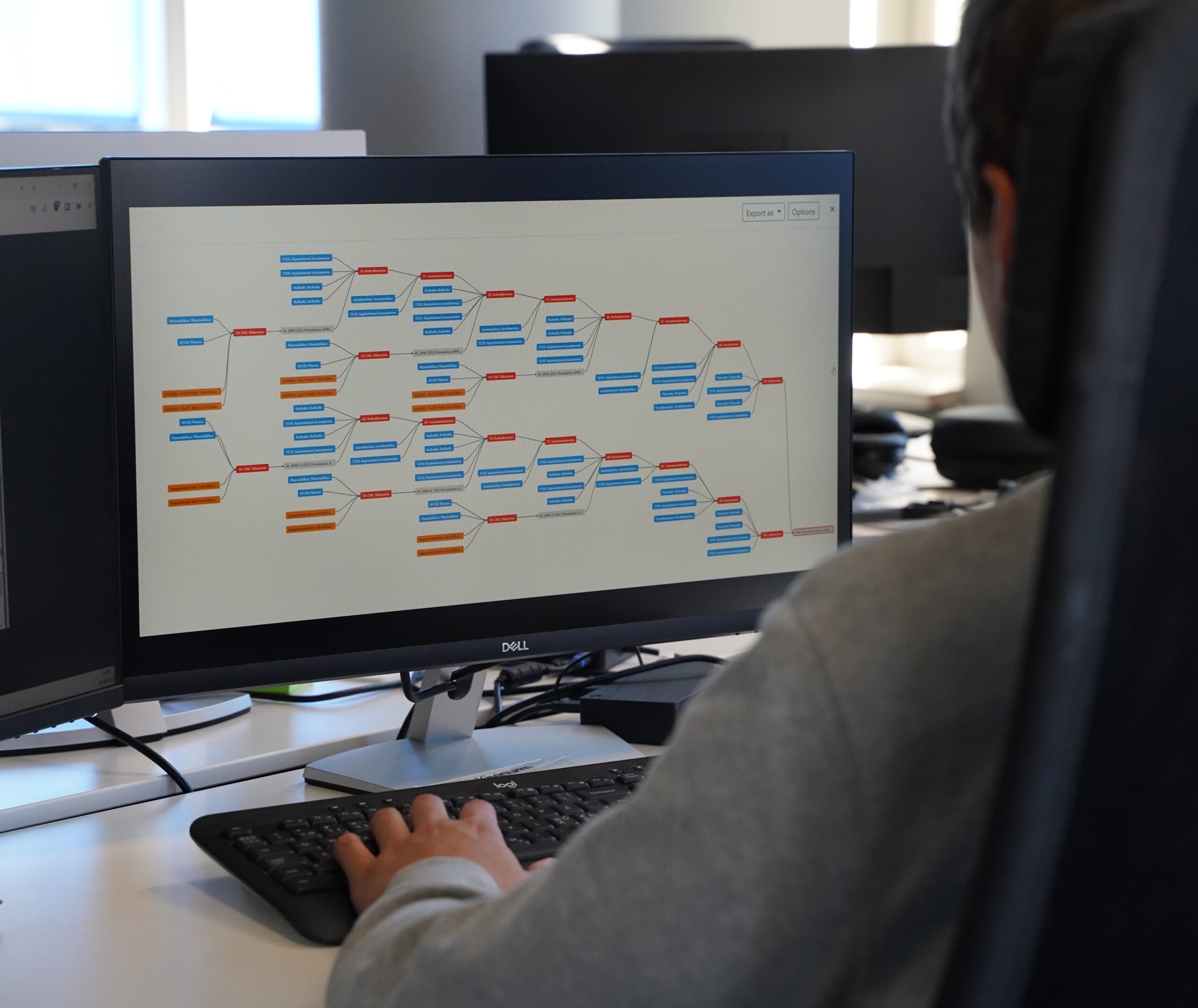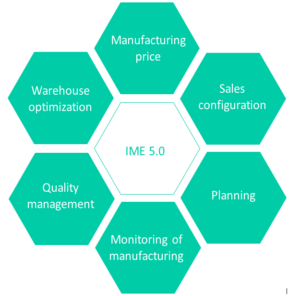IME 5.0
In production, everything begins with technology—without it, production is impossible.
The capabilities of a production system are determined by the technology it employs.
IME 5.0 serves as a powerful tool for mapping production potential by seamlessly connecting machines, equipment, and personnel, all while accounting for how these resources are intended to be utilized within the production process.
Manufacturing Optimization
AI Solutions in Industry
Workforce Planning
What is IME?
IME 5.0 integrates the components of production and technology into a cohesive whole while offering a sufficiently detailed perspective tailored to the needs of every department.
The foundation lies in the technological route of the products, defined by terms such ass:
* the product, * configuration, * processes, * instructions, * tasks, * selectors, * conditions, * specifications, * resources etc.
The more detailed the product’s production technology is described, the more precisely we can assess production potentialities and demands. In the case of a large production portfolio and complex products and production process, the need for detailed data can instead become a concern of the system – the constant addition and modernization of technological data is, as a rule, a manual, labor-intensive and error-prone activity. Special solutions have been created in the IME software to avoid such situations, where the management of technological data is carried out by applying product templates and configurable specifications describing the product. Based on this data, IME system assembles automatically the product’s production route.
Adding a new product, acquiring or replacing a production machine and other activities that require large-scale changes in the technology of products are easy, convenient and fast for technologists – the entire detailed production route, calculation of standards, cost calculations are automatically generated by IME for all products related to the change.
In addition, it is possible to link the data with different relevant documents (such as product drawings, work – and user manuals, internal guidelines, safety techniques etc.).
The data stored in IME 5.0 is available to all systems that are used by the company.

Why IME?
In order to make the company truly effective we need in addition to manufacturing also to optimize all the non-manufacturing functions where mainly during information processing a lot of resources of the company are lost. All that we gain with big efforts in the manufacturing we may lose easily while processing information. Measurable wastage is only the top of the iceberg. The main damage is caused by wasted sales opportunities and the loss of trust.

In order to avoid such losses, the manufacturing, sales and supportive functions of manufacturing need to be made to interact in real-time, so that all supply chain participants would be changing information automatically.
If the company has set the target to make the existing supply chain more effective, it makes sense to use IME software before starting the development, in order to avoid possible misunderstandings with too simplified and one-sided technology in the future.